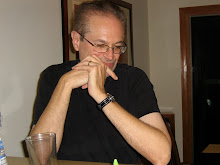
Quote of the day:
“Hatred is an affair of the heart; contempt that of the head.”
--Arthur Schopenhauer
These days we are alternately fascinated by and scared of China. It seems clear that the country is in the process of becoming an economic and political superpower, and we don’t know whether to cheer them on or be very frightened.
The photo above is a bridge in a Chinese city, choked by smog. What goes on inside China is a big mystery to most of us. We see pictures, we read news reports. But it can be very hard to learn what everyday life is like.
This makes Peter Hessler’s “Letter From China” in the November 26th “New Yorker” very rewarding reading. It’s an entertaining romp through what it’s like to rent a car and drive in China. He did both over several years.
What makes driving in China such an adventure is that most people are new to it. On top of this, everyone knows a little bit about driving--literally, just enough to be dangerous.
Car ownership is becoming more and more common, and everyone seems to think he’s a good driver. China has 28 cars per every thousand people, which is where the U.S. was in 1915. They have three percent of the world’s cars but twenty-one percent of its traffic fatalities.
Windshield wipers are considered a distraction, as are headlights. The use of headlights was banned in Beijing until the mid-1980s.
One question on the driving exam is “During the evening, a driver should a) turn on the brights, b) turn on the normal lights, c) turn off the lights.”
Another question: “True or False: In a taxi, it’s fine to carry a small amount of explosive material.”
And this: “When overtaking another car, a driver should pass a) on the left, b) on the right, c) wherever, depending on the situation.”
And this: “If, while preparing to pass a car, you notice that it is turing left, making a U-turn, or passing another vehicle, you should a) pass on the right, b) not pass, c) honk, accelerate, and pass on the left.”
And this: “When driving through a residential area,, you should a) honk like normal, b) honk more than normal, to alert residents, c) avoid honking, in order to avoid disturbing residents.”
Honking is essential, according to Hessler, who describes the horn code: “A solid hooooonnnnnk is intended to attracted attention.
"A double sound--hooooonnnnnk, hooooonnnnnk--indicates irritation. There’s a particularly long hooooooooooooonnnnnnnnnnk that means a driver is stuck in traffic, has exhausted curb-sneaking options, and would like everyone else on the road to disappear.
“A responding hooooooooooooooooonnnnnnnnnnnnk proves they aren’t going anywhere.”
Wednesday, November 28, 2007
Driving in China
Subscribe to:
Post Comments (Atom)






No comments:
Post a Comment